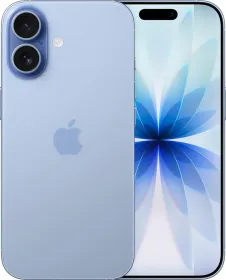TL; DR
- Each handset in the lineup has an array of aligned magnets underneath its back panel, which follows the Qi2 Magnetic Power Profile (MPP) standard.
- Given that the technology is based on the global Qi2 wireless charging standard, the Pixel 10 series, in theory, should be compatible with any Qi2-certified accessory, including those that are made for Apple’s MagSafe-compatible devices.
- Moreover, it is the magnetic profile and the snap-on wireless charging capability that Google is branding as Pixelsnap. Like MagSafe, Pixelsnap is also accompanied by an on-screen animation to confirm that the device is charging.
Wireless charging has been around for quite some time, but it didn’t gain much traction until the Cupertino-based tech giant simplified it by integrating magnets into the iPhone’s exterior shell and calling the technology MagSafe charging (first launched with the iPhone 12 in 2020).
It was the magnetic snap-on feature that paved the way for easier, more reliable wireless charging and accessory attachment. While Android flagships have also supported Qi wireless charging for years, they’ve lacked a native magnetic profile.
Most Android Flagships Don’t Provide Magnetic Wireless Charging

For instance, Samsung’s Galaxy S25 (review) series is Qi2-Ready, but it lacks the magnetic attachment functionality. Other popular Android flagships, such as the Pixel 9 (review) series, the OnePlus 13 (review), or the vivo X200 (review), also lack the support for Qi2 wireless charging in its complete form.
However, Google has decided to break the trend with Pixelsnap wireless charging, a technology that currently remains exclusive to the Pixel 10 lineup (including all four models), but lays the foundation of magnetic wireless charging for Android smartphones.
Also Read: Google Pixel 10 Series Brings 14 New AI Features: Check Them Out Here
Google’s First MagSafe Alternative: Pixelsnap Wireless Charging

Before we begin discussing the Pixelsnap wireless charging, it’s important to mention that Google isn’t the first manufacturer to integrate the technology into its smartphone. It was the HMD Skyline that adopted magnetic Qi2 charging last year, but it was not nearly as mainstream as the Pixel series.
With that out of the way, let’s bring our attention back to the Pixel 10 series. Each handset in the lineup has an array of aligned magnets underneath its back panel, which follows the Qi2 Magnetic Power Profile (MPP) standard.
The magnets help you with two things: align the wireless charging coils on your Pixel 10 perfectly with those on the wireless charging puck. Second, they also let you attach various magnetic accessories, such as cases, stands, magnetic power banks, etc.
Also Read: Pixel Watch 4 & Pixel Buds 2a Launched In India: Check Specs And Price Here
Given that the technology is based on the global Qi2 wireless charging standard, the Pixel 10 series, in theory, should be compatible with any Qi2-certified accessory, including those that are made for Apple’s MagSafe-compatible devices.
Moreover, it is the magnetic profile and the snap-on wireless charging capability that Google is branding as Pixelsnap. Like MagSafe, Pixelsnap is also accompanied by an on-screen animation to confirm that the device is charging.
How Fast Is Google’s Pixelsnap Wireless Charging Technology?

- On the Pixel 10, Pixel 10 Pro, and the Pixel 10 Pro Fold, Pixelsnap provides up to 15W wireless charging speed.
- However, on the Pixel 10 Pro XL, Pixelsnap uses Qi2.2 to provide up to 25W wireless charging speed (of course, with a compatible 35W or higher charger).
- Even if you’re not using a first-party Pixelsnap accessory, any Qi2-certified device should provide up to 15W charging.
Also Read: Pixel 10 Pro Fold vs. Galaxy Z Fold 7: The Flagship Android Foldable Showdown
Google’s Pixelsnap Ecosystem vs. Third-Party Options



Currently, Google has four different Pixelsnap accessories on sale, the details of which I’ve mentioned below.
- Pixelsnap Charger (Rs. 4,500): A simple wireless charging puck that attaches to the back of the compatible Pixel 10 or other Qi2-compatible devices (possibly on a MagSafe iPhone as well).
- Pixelsnap Charger with Stand (Rs. 6,939): This includes the wireless charging puck with a stand that lets you mount your Pixel smartphone (even the Pixel 10 Pro Fold when it unfolded).
- Pixelsnap Ring Stand (Rs. 2,979): This is a magnetic accessory that lets you prop your Pixel device on a tabletop using the outer metal ring. Interestingly, there’s a microfiber cloth lining between the ring stand and the phone, which lets you change the alignment as well.
- Pixelsnap Case (Rs. 4,900): These are Google’s first-party protective cases that support the magnetic snap-on and wireless charging functionality.
While these are Google’s Pixelsnap accessories, the Pixel 10 series should support other Qi2-compatible and MagSafe accessories from brands like Spigen, Belkin, etc.
Also Read: Qi2 25W or v2.2.1 Is Here, but Android Still Isn’t Really on Board
How Does Pixelsnap Compare to Apple’s MagSafe Charging?

| Google Pixelsnap (Pixel 10/Qi2) | Apple MagSafe (iPhone 12+/Qi2) | |
| Charging Tech Standard | Qi2 (industry universal, magnetic profile) | MagSafe (Apple proprietary, Qi2 now) |
| Alignment Mechanism | Built-in magnets (Qi2 MPP, cross-brand) | Built-in magnets (Apple proprietary) |
| Charging Speeds | Up to 25W (Pixel 10 Pro XL); 15W (others/Qi2) | Up to 15W (iPhone 12–15); 25W (iPhone 16) |
| Accessory Compatibility | Qi2 & MagSafe accessories (Apple, third-party) | MagSafe accessories (Apple, MFi/third-party), now Qi2-compatible |
| Backward Compatibility | Qi2 is backward compatible with Qi standard | Qi2 is backward compatible with Qi; MagSafe accessories mostly work with Qi2 phones |
| Ecosystem | Pixelsnap accessories + Qi2/MagSafe ecosystem | MagSafe ecosystem, now Qi2-compatible |
| Magnetic Convenience | First in the Android mainstream phone, cross-brand | Exclusive to Apple until Qi2 adoption |
| Cost of Accessories | Starts at Rs. 4,500 for the wireless charging puck | Starts at Rs. 4,500 for the wireless charging puck |
You can follow Smartprix on Twitter, Facebook, Instagram, and Google News. Visit smartprix.com for the latest tech and auto news, reviews, and guides.



























